Identification of Antiviral Agents from Natural Sources
Abstract:
HIV and HCV infections occur in roughly 36 and 185 million people in the world, respectively and around 2.3 million people are living with co-infections of both of these viruses. Effective vaccines against HIV and HCV remain to be developed. There is no specific drug that can completely treat HIV infection. Despite the availability of effective regimens to treat HCV infections, the overall hepatitis associated disease burden has not lowered due to several factors including cost ineffectiveness of these drugs, inaccessibility of low-income populations and asymptomatic nature of the infection. Moreover, due to a rapidly evolving nature of these viruses drug resistance emerges quickly. Surfaces of both HIV and HCV are decorated wtih an array of human cell-incorporated glycans as part of envelope glycoproteins. These glycoproteins particularly glycans are potential targets for therapeutic intervention. This study is focused on to identify new HIV and HCV cellular entry inhibitors from natural sources as potential antiviral agents. In this study we collected several algal strains including those habitant of only the Pakistani environment to explore their chemical landscape for the discovery of HIV and HCV entry inhibitors. We used a combination of surface plasmon resonance (SPR), pseudovirus based viral infectivity and inhibition assays and different chromatographic techniques to identify two new antiviral proteins and a sulfated polysaccharide that inhibit HIV-1 entry to the host cell. Overall, in this study we identified three anti-HIV agents from three different algal extracts and a partially purified secondary metabolite as an entry inhibitor of HCV.
Moreover, we characterized the specificity of linear epitopes of neutralizing antibodies potentially involved in spontaneous HCV clearance while contributing to an existing project in the lab. The prior study in our laboratory on this project showed that serum samples from HCV chronic patients and spontaneous resolvers reacted to peptides corresponding to highly conserved linear epitopes of neutralizing antibodies. These epitopes include regions encompassing amino acid 412-423, 432-443 and 523-532 of the HCV envelope protein E2. Previous study also showed that specific serum samples neutralized HCVpp with diverse ED50 values. Building on the existing study, here we performed peptide competition HCVpp assay to find details if the HCV neutralization is due to the antibodies that had shown reactivity to linear epitopes in ELISA assay. Competition HCVpp neutralization assay in combination with previous study showed that the linear epitope with sequence 432-443 specifically competed the viral neutralization of serum samples from spontaneous resolvers and is potentially involved in spontaneous viral clearance as an epitope of viral neutralizing antibodies.
Publications:
Characterization of linear epitope specificity of antibodies potentially contributing to spontaneous clearance of hepatitis C virus.
Ahsan A # , Dar S # , Hassan F, Ghafoor F, Yousuf MH, Shahzad-Ul-Hussan S. PLoS One. 2021 Aug 27;16(8):e0256816. doi: 10.1371/journal.pone.0256816. eCollection 2021. PMID: 34449828 ( # joint first author)
CDK1 inhibition facilitates formation of syncytiotrophoblasts and expression of human Chorionic Gonadotropin.
Ullah R, Dar S, Ahmad T, de Renty C, Usman M, DePamphilis ML, Faisal A, Shahzad-Ul-Hussan S, Ullah Z. Placenta. 2018 Jun;66:57-64. doi: 10.1016/j.placenta.2018.05.003. Epub 2018 May 17. PMID: 29884303
A synthetic cadmium metallothionein gene (PMCd1syn) of Paramecium species: expression, purification and characteristics of metallothionein protein.
Dar S, Shuja RN, Shakoori AR. Mol Biol Rep. 2013 Feb;40(2):983-97. doi: 10.1007/s11033-012-2140-8. Epub 2012 Nov 3.

